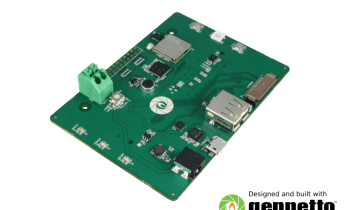New Raspberry Pi 500: A Look at Features and Educational Use
The release of the Raspberry Pi 5 was met with excitement, but many expected a similar trajectory to its predecessor. However, a new surprise has emerged—the Raspberry Pi 500. A recent discovery on GitHub has confirmed the development of this unexpected device, hinting at exciting possibilities for both hobbyists and educators.

Watch Ian talk about the Raspberry Pi 500 possibly coming soon in this episode of The Electromaker Show
What is the Raspberry Pi 500?
The Raspberry Pi 500 is a newly discovered development hinted at through updates on the Raspberry Pi GitHub repository. Unlike the anticipated Compute Module 5, the Pi 500 was unexpected and is poised to follow in the footsteps of the Raspberry Pi 400. This model integrates a keyboard into its design, offering a compact, all-in-one solution for computing, particularly useful for educational environments and entry-level users.
While some have criticized the need for an integrated keyboard, the Pi 500 aims to enhance accessibility by simplifying the setup, making it ideal for classrooms and hobbyists.
Raspberry Pi 400 – A Hit or Miss?
The Raspberry Pi 400 stirred mixed reactions among users. Some argued that integrating the keyboard into the computer was unnecessary, especially since traditional Raspberry Pi setups already offer a compact solution. Critics noted that the Pi 400 lacked portability, making it less ideal for headless applications.
However, in educational settings, the Pi 400 found a significant niche. Teachers have praised its utility, especially when paired with outdated peripherals, allowing students to engage with both software and physical computing through GPIO pins. Its simple, stackable design makes it perfect for classrooms, where resources are often limited but the need for versatile computing tools is high.

Why the Raspberry Pi 500 Could Matter
The arrival of the Raspberry Pi 500 could bring much-needed enhancements to accessible computing. While retaining the simplicity of the Pi 400, the Pi 500 may offer more power and flexibility, making it appealing to both hobbyists and educational institutions. By bridging the gap between affordability and performance, it could play a pivotal role in environments where resources are limited but the demand for hands-on learning and physical computing remains high.
This new model may also broaden its appeal to users looking for a straightforward, versatile device for everyday tasks and experimental projects alike.
Did you enjoy this article?
Make sure you subscribe to The Electromaker Show for similar content and subscribe to our monthly newsletter!














































Leave your feedback...